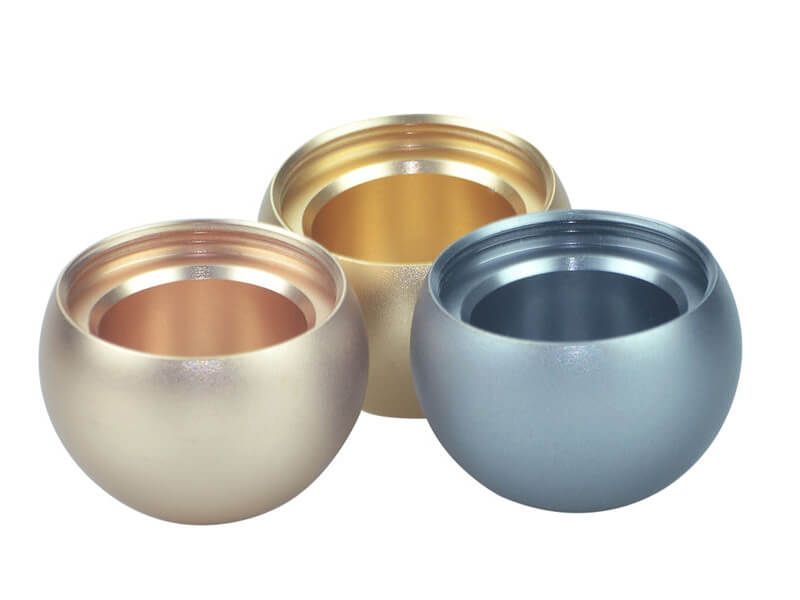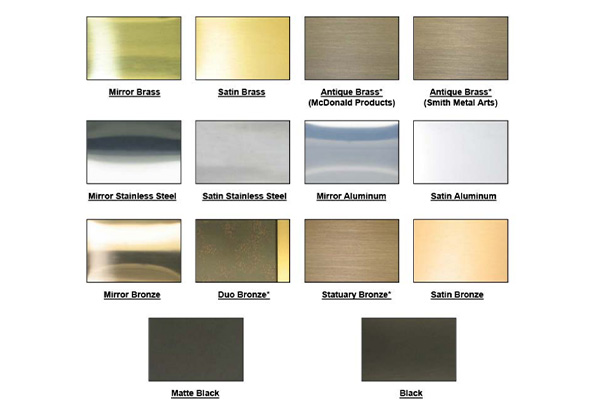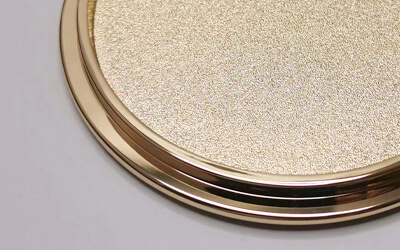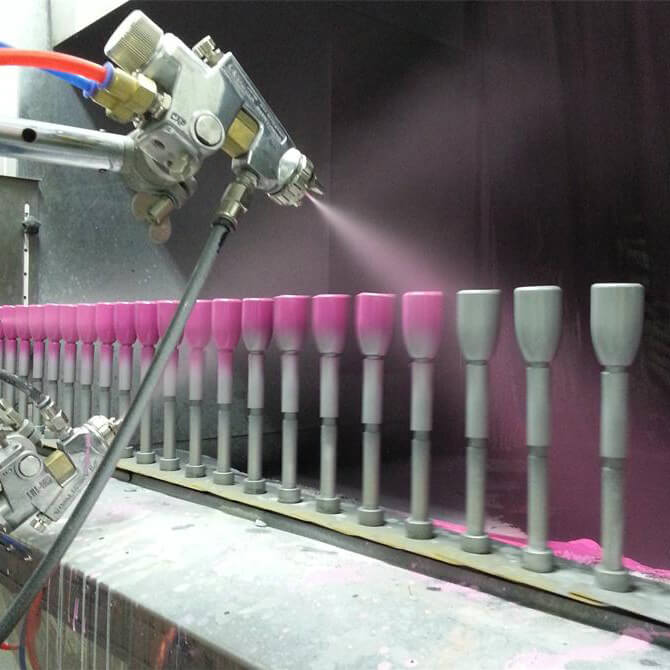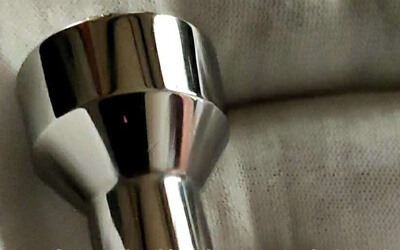Comprehensive Guide to Metal Finishing Chart
Metal finishing chart is an engineering tool designed to document and analyze finish options and specifications for different metal products. While these metal finishing charts may appear complex and confusing, they actually provide critical data that will help engineers, designers, and manufacturers choose the best approach for their unique projects. In the following sections, we’ll start with a metal finishing chart, detail how metal finishing works, and provide other relevant information to help you better understand the field.
Definition and Purpose of Metal Finishing
Metal finishing is a comprehensive term used to describe the act of applying a metal coating onto the exterior of a metallic component, typically referred to as a substrate. It can also involve the implementation of a process for cleaning, polishing or otherwise improving a surface. The application of metal finishing proves advantageous in elevating the visual appeal of a product, enhancing resistance to corrosion, bolstering longevity, or modifying its electrical and mechanical characteristics. This process has huge significance in different industries and can ensure that metal products meet standards in terms of appearance, performance and longevity. Metal Finishing as pre-processing and post-processing, it is often used in custom metal accessories.

What is Metal Finishing Chart?
A Metal Finishing Chart, also known as a Surface Finish Chart or Surface Roughness Chart. Metal finishing chart is a visual representation or graphical tool that provides information about different surface finishes or textures that can be applied to metal or other materials. These metal finishing charts are typically used in engineering, manufacturing, and design to communicate and specify the desired surface finish for a particular component or product. The primary purpose of a Metal Finishing Chart is to standardize communication about surface finishes. Engineers and designers can refer to these metal finishing charts to specify the desired finish on engineering drawings or product specifications. Different industries may have their own variations of metal finishing charts, but the basic purpose remains the same, both to provide a visual reference and description of the finish to facilitate effective communication during manufacturing and design.
Contents of Metal Finishing Charts
Metal finishing charts provide valuable information about various metal finishing processes and their corresponding characteristics.
Surface Finish
In the world of CNC machining, various surface finishing charts are useful. The most common of these is the roughness chart, which visually represents the roughness of a surface. This chart proves invaluable in the selection of the optimal machining process for a particular surface. In conjunction with a standard chart that delineates various surface finishes by measuring different surface textures, they jointly facilitate the determination of whether a surface conforms to desired tolerances. As a best practice, utilizing both charts, alongside any accompanying symbols, empowers operators with precise parameters to adhere to.
These charts typically incorporate various instructive symbols, often mirrored in technical drawings. These symbols illuminate the appearance of a surface post-machining, each with a distinct meaning that can articulate diverse facets of a surface finish:
- Ra – Average Roughness: Ra gauges the average roughness of a surface. It quantifies the average height of surface irregularities, including peaks and valleys, over a specified length, with units of measurement omitted.
- Rz – Average Maximum Height of the Profile: Rz calculates the average discrepancy between the five largest peaks and valleys. By considering five distinct sampling lengths, this calculation mitigates potential errors. It proves especially valuable in capturing extremes that might elude Ra’s sensitivity.
- Rmax – Vertical Distance from Peak to Valley: Rmax exhibits greater sensitivity to anomalies such as burrs and scratches, imperceptible by Ra alone.
- RMS – Roughness Average Magnitude Surface: RMS, or roughness average magnitude surface, assesses the average roughness of a surface. It’s computed by taking the absolute value of the surface’s RMS roughness magnitude.
- PE – Profile Roughness: Profile roughness quantifies the size and distribution of surface irregularities. It is typically expressed by the height of the tallest peak or the depth of the deepest valley on the surface.
- PS – Profile Smoothness: Profile smoothness encapsulates the average area of flat surfaces within a surface’s profile. Typically, it’s conveyed through the breadth of the flattest section or the thickness of the thinnest portion.
- PT – Profile Tolerances: Profile tolerances specify permissible deviations from a nominal profile. Crucial for ensuring proper fit and intended functionality of parts, these tolerances stipulate the maximum allowable deviation from the nominal profile at any point along the part’s length.
Metal Finishing Techniques
Metal finishing methods include a variety of techniques and processes aimed at altering the surface of metal objects to achieve specific properties, such as improving appearance, corrosion resistance, durability or functional properties. Here are some common methods of metal finishing:
- Electroplating: Electroplating involves the deposition of a layer of metal (such as chromium, nickel, copper, or gold) onto the surface of a metal substrate through an electrochemical process. This method enhances the appearance, corrosion resistance, and wear resistance of the metal.
- Anodizing: Anodizing is an electrolytic process primarily used with aluminum and its alloys. It forms a protective oxide layer on the metal’s surface, providing improved corrosion resistance, increased hardness, and opportunities for color customization.
- Passivation: Passivation is a chemical process that removes impurities and contaminants from the surface of stainless steel and other corrosion-resistant alloys. It enhances the material’s corrosion resistance by forming a passive oxide layer.
- Painting and Powder Coating: These methods involve applying a layer of paint or powdered pigment to the metal surface. They improve aesthetics and provide protection against corrosion. Powder coating involves the electrostatic application of dry powder followed by curing.
- Polishing and Buffing: Polishing and buffing processes use abrasive materials and mechanical action to achieve a smooth and shiny surface. This method is commonly used in jewelry, automotive, and decorative applications.
- Abrasive Blasting: Abrasive blasting, such as sandblasting or bead blasting, uses abrasive particles propelled at high speed to remove rust, scale, or old coatings from metal surfaces. It can also impart a matte or textured finish.
- Chemical Etching: Chemical etching involves selectively removing material from the metal’s surface using chemicals. It is often used for decorative patterns, labeling, or creating textures on metal.
These are part of the description of metal finishing methods, the choice of which metal finishing method depends on factors such as metal type, desired results, application and cost considerations. Engineers and designers carefully choose the appropriate method to achieve the desired surface characteristics for a given project.
Material Compatibility
Metal finishing charts often outline the compatibility of different metals and alloys with specific finishing processes. Certain finishes or treatments may be suitable for one metal but not for another due to factors like chemical reactivity or temperature limitations.
Coating Thickness
For coating processes like electroplating or powder coating, metal finishing charts may indicate the recommended or achievable coating thicknesses for different applications. This information helps ensure the desired performance and durability of the metal finished product.
Corrosion Resistance
Metal finishing charts may include data on the corrosion resistance properties of specific finishes or treatments. This information is crucial when selecting the appropriate finishing method to protect the metal substrate from environmental factors or chemical exposure.
Chemical Composition
Some metal finishing charts may include details about the chemical composition of solutions or baths used in specific processes. This information can be helpful for process control, troubleshooting, or selecting alternative solutions based on availability or environmental considerations.
Process Parameters
Metal finishing charts may present recommended process parameters such as temperature, time, voltage, current, or concentration ranges for different metal finishing techniques. These parameters help achieve desired results and ensure consistency in the finishing process
It is worth noting that the content and layout of metal finishing charts may vary depending on the source or specific industry requirements. Consult Sungplastic’s professionals for more detailed and customized information on metal finishing.
How Different Finishes Impact Product Performance
The metal finishing chart describes the effect of different finishes on product performance. The choice of finish plays a vital role in determining the performance and longevity of the product. The finish of a product, whether applied to the material or the coating, has a major impact on its performance in all aspects. Manufacturers must carefully consider the specific requirements of their application and the properties of different finishes to select the most appropriate one for their needs. Here are some common ways in which different finishes affect product performance:
- Aesthetic Appeal: Finishes often serve a decorative purpose, enhancing the visual appeal of a product.
- Corrosion Resistance: Galvanized, anodized or powder coated to provide a protective layer against corrosion. This is crucial for products exposed to moisture or harsh environmental conditions.
- Durability: High-quality paint or powder coating can protect the metal surface from wear and tear, prolonging its service life.
- Friction and Wear Resistance: Teflon coatings or hard anodized coatings can reduce friction and wear between moving parts. This is critical in applications like automotive components or industrial machinery.
- Chemical Resistance: Some finishes are resistant to specific chemicals, making them suitable for use in environments where exposure to corrosive substances is a concern. For example, chemical-resistant coatings are used in the chemical processing industry.
- Electrical Properties: Gold or silver plating improves electrical conductivity, which is critical in electronics.
- Thermal Properties: Certain finishes can enhance a product’s thermal conductivity or insulating properties. This is important in applications like heat sinks for electronics or insulation materials.
- Ease of Cleaning: Smooth, non-porous finishes are often easier to clean and maintain, which is crucial in industries such as food service and healthcare.
- Cost: The cost of applying a finish can vary significantly, impacting the overall cost of the product. High-quality finishes may be more expensive upfront but can save money in the long run by increasing the product’s lifespan and performance.
Factors Influencing Metal Finishing Selection
Metal finishing charts include many things. Selecting the appropriate metal finishing process involves considering a variety of factors to ensure the desired performance, appearance, and functionality of the finished product. Here are some key factors that influence the selection of metal finishing processes:
- Material Type: Different metals and alloys react differently to various finishing processes. The type of material being finished will dictate which finishing options are suitable.
- Functional Requirements: Consider the intended purpose of the finished product. Does it need corrosion resistance, wear resistance, electrical conductivity, or other specific functional properties?
- Environmental Conditions: The environment in which the product will be used (e.g., indoors, outdoors, marine, chemical exposure) impacts the required level of protection against corrosion and other environmental factors.
- Substrate Preparation: The condition of the metal substrate before finishing is crucial. Some processes require thorough cleaning, pre-treatment, or surface activation for optimal adhesion and performance.
- Surface Smoothness: Depending on the application, a smooth or textured surface may be desired. Some finishing processes can influence the surface texture.
- Dimensional Tolerance: The thickness of the finish can affect the dimensions of the part. Processes that involve adding material, like plating, need to be carefully controlled to avoid dimensional issues.
- Cost: Different finishing processes have varying costs associated with materials, equipment, labor, and waste disposal. Balancing cost with the desired properties is important.
- Production Volume: The volume of parts being finished can impact the choice of process. Some processes are more suitable for high-volume production, while others are better for small batches or prototypes.
- Lead Time: Some finishing processes require longer lead times due to preparation, curing, or drying times. Consider the project timeline when selecting a process.
- Health and Safety: Some finishing processes involve the use of hazardous chemicals or emit harmful fumes. Worker safety and environmental regulations must be considered.
- Waste Disposal and Recycling: The waste generated during finishing processes needs to be properly managed. Environmentally friendly processes or those with efficient waste management are preferred.
- Ease of Maintenance: Consider how easy it will be to maintain the finish over the product’s lifecycle.
In conclusion, selecting the right metal finishing process involves a comprehensive analysis of these factors to ensure that the chosen finish aligns with the product’s intended use, performance requirements, and manufacturing constraints.
Choosing the Right Metal Finishing
When selecting a metal finishing process, several factors should be carefully considered based on the metal finishing chart. Production speed is paramount, if your operations require rapid turnaround times, opt for a process that aligns with your tight production schedules. Additionally, take into account the hardness of the metal or substrate material you’re working with. An excessively abrasive process could harm the part, while one that’s too gentle may fail to attain the desired outcome.
Cost, as always, remains a pivotal concern. Delving into various pricing alternatives can lead to substantial cost savings for your company. For instance, a procedure like electroplating with a precious metal may exceed your budget constraints. However, you might achieve similar results at a lower overall cost by substituting a less expensive metal. If you have other questions about metal surface treatment, you can contact Sungplastic, and we will choose a suitable surface finishing process for your custom metal parts.
Custom Metal Parts Services–Sungplastic
Usually, custom metal products cannot do without metal surface treatment. Metal finishing services are often the final step in the manufacturing process and play a key role in creating high-quality, durable products. In our daily life, we often come into contact with some electrical appliances, equipment and products. The surface of these products is either carefully processed, or the surface of the part needs to be finely processed. As a result, knowledge and technology in this field is constantly evolving and innovating, changing the methods we use today.
Sungplastic uses accurate metal finishing charts to help you understand the best way to choose a finish. Metal finishing charts provide you with detailed information on different treatments, giving you a clear understanding of how different metal finishing methods affect the appearance, performance and functionality of your material. No matter which metal finishing method or process you choose, Sungplastic can accommodate your needs, customizing your metalwork to meet your expectations.
About Sungplastic
Sungplastic is a plastic product manufacturer with rich experience in injection molding. According to the different product development requirements, we flexibly adjust the manufacturing process to achieve high quality, high efficiency and more economical.
We offer a variety of manufacturing services: Rapid Prototyping, Tool Making, Injection Molding, Product Design and Development, CNC Machining and Metal Stamping. You can choose from a variety of plastics, silicone rubber, or metal for your product. Regardless of mass production or small batch customization, Sungplastic has always been committed to providing assured, efficient and more economical one-stop processing services for your projects.
Contact us for a free quote and project review.
Get a free quote and design analysis today.
We’ll reply you within 6 working hours. We respect your privacy.

